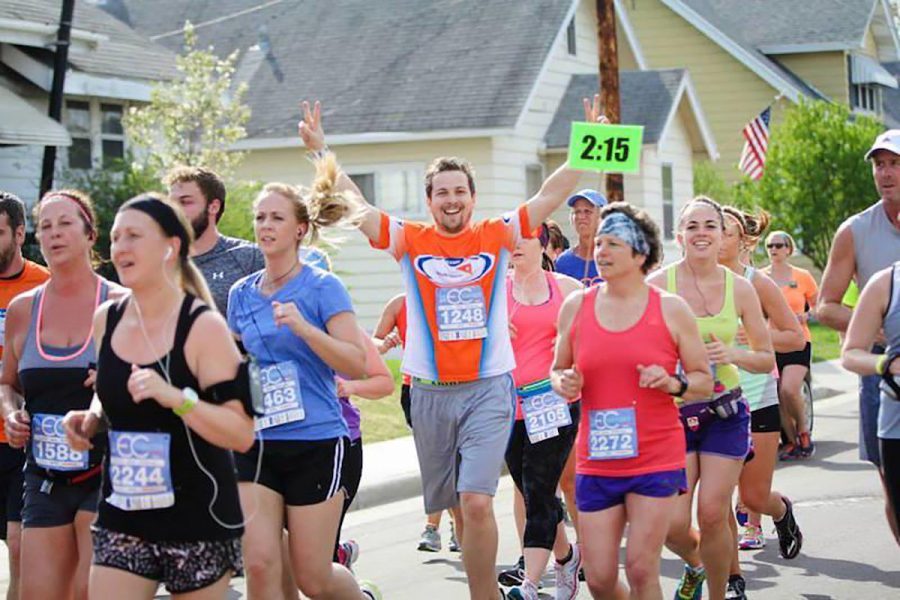Right for running
There isn’t a body type required for finishing a half or full marathon
Photo by Gabbie Henn
The Eau Claire Marathon, which took place last Sunday, featured nearly 5,000 runners with a diversity of backgrounds, body types and abilities.
Everyone can run a half marathon or marathon.
I should disclose: I finished the Eau Claire Half Marathon about three hours prior to writing this, so there’s a good chance I could still be feeling the effects of runner’s high. But I’m pretty sure I’m thinking clearly when I say the desire to run is the difference between a “runner” and a “non-runner.”
After the race, I was talking to an onlooker who told me he didn’t think just anyone could run a half or full marathon. He was convinced a person’s ability to run is dictated by their body type; you’re either born a marathoner or out of luck.
Based on my self-collected evidence, this is not true. While running the half marathon, I noticed the diversity of runners around me.
There were tall people, short people; thin and wide people. A woman with gray hair who appeared to be several years older than me beat me. For awhile, I ran next to a person in a wheelchair, who was part of a non-profit charity called myTEAM TRIUMPH.
Don’t get me wrong: completing a half or full marathon is a challenge. But I firmly believe that when it comes to crossing the finish line, body type — or age or ability or gender — does not matter.
Unfortunately, our habit of categorizing people by their body type occurs outside of distance running.
Body shape dictates the clothes we are told flatter us. If our body type doesn’t fit society’s idea of our gender identity, we are not (that gender) enough. Only tall, slender able-bodied women can be runway models. People on the shorter side are discouraged from sport where height determines ability. Conversely, taller people are expected to play those sports.
The intersectional list goes on and on — I acknowledge I’ve just touched the surface.
Something that stuck with me the entire 13.1 miles was what the starting line announcer told the crowd — finishing a half or full marathon is more than just a race, it is proof you can do anything you put your mind to.
In retrospect it sounds cheesy, but it kept me going during mile eight through eleven of the race. I have a rising suspicion that long distance races aren’t a test of physical fitness: They’re a test of mental stamina.
The same goes for training. Dedicating hours to running (sometimes, in the least-desirable conditions) is much more a battle of determination than a physical one. One of my friends who ran the half marathon consistently trained on a few meager hours of sleep, thanks to a terrible work schedule.
Running a long-distance race is as simple as making a decision and sticking with it.
Alexandra Heminsley, author of “Running Like a Girl,” chronicled her everything from her humble beginning to her completion of several marathons and half marathons.
“Whenever anyone asked me how I’d done it,” Heminsley wrote, “the answer was simple: I decided to be able to.”

Neupert is a fourth-year journalism student at UW-Eau Claire. She is the executive producer of Engage Eau Claire on Blugold Radio Sunday. In her spare time, Neupert's working on becoming a crossword puzzle expert.

